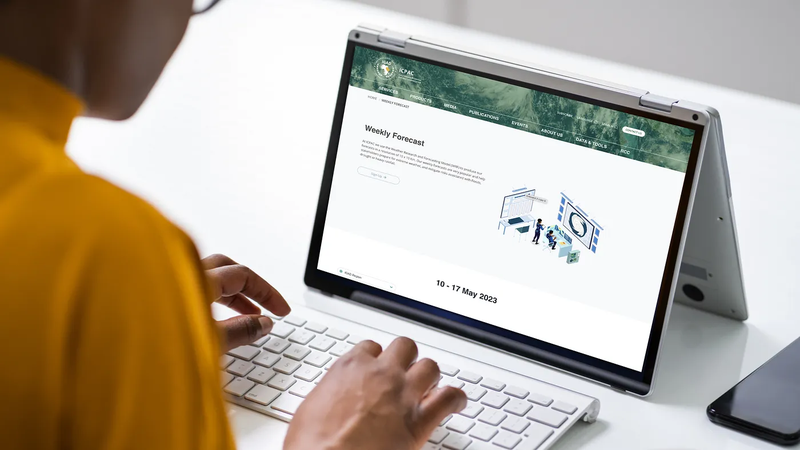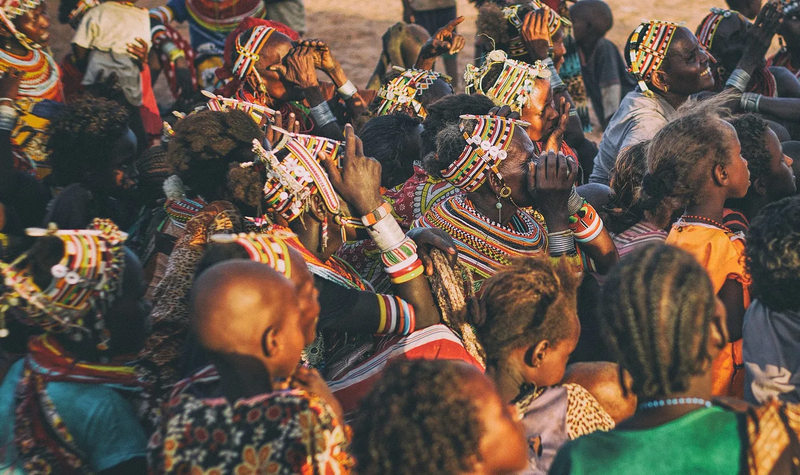Sustainable solutions for capacity building in weather and climate information
By Abduwali Abdi & Collison Lore With contributions from the ICPAC Climate Change Technical Working Group.

Background
Capacity building in weather and climate refers to enhancing individuals, organizations, and communities’ skills, knowledge, and capabilities to comprehend and effectively manage weather and climate-related risks and opportunities. Durable solutions to build capacity in weather and climate involve developing sustainable approaches that can help deliver long-lasting benefits to stakeholders along the climate services value chain.
While significant progress has been made in this area in recent years by the IGAD Climate Prediction and Application Centre (ICPAC) and the National Meteorological Agencies in Eastern Africa, several gaps still need to be addressed to achieve effective and durable capacity building. During the months of June 2022 to March 2023, NORCAP — part of the Norwegian Refugee Council (NRC), ICPAC, UK Meteorological Office (UK Met Office), Accelerating Impacts of CGIAR Climate Research for Africa (AICCRA), and partner National Meteorological Agencies co-designed a ten-country capacity building approach that involved significant input from the National Meteorological institutions in the region. One of the critical outcomes of the capacity-building activity in the region was a sound discourse on durable solutions in capacity building in the region.
Key elements in the discourse on durable solutions in the Eastern Africa context
Institutional strengthening
Institutional strengthening in weather and climate services in Eastern Africa was one of the most prominent elements of the discourse on durable solutions. It generally refers to enhancing the capacity and capabilities of institutions responsible for providing weather and climate information and services. These institutions include National Meteorological and Hydrological Services, climate research institutions, Disaster Risk Management Agencies, and other relevant organizations.
Institutional strengthening should occur from the sub-national, national, and regional levels. The central objective is to ensure that these institutions can provide reliable and timely weather and climate information and to improve their capacity to respond to the needs of end users.
During the Uganda and Ethiopia leg of the capacity building workshops, it was agreed that, in order to provide weather and climate services at the sub-national level, it is essential to use approaches such as Agro-Ecological Zones to provide relevant and actionable climate services, thus linking forecasts to output.
Partnership and collaboration
The Sudan and South Sudan leg of the workshops was in consensus that partnerships and collaboration are essential for building more resilient communities in the face of weather and climate-related challenges in the two countries and beyond. The participants agreed that by working together, different stakeholders could bring their unique knowledge, expertise, and resources to develop effective and sustainable weather and climate services, both nationally and regionally. The South Sudan delegation observed that they shared a common history and understanding of meteorology and climate issues in the region. Over the duration of the regional capacity building workshops, participants identified several vital collaboration and partnership approaches to capacity building.
Public-Private Partnerships
These involve collaboration between public institutions and private companies or organizations to develop and deliver weather and climate services. For example, National Meteorological and Hydrological Services may partner with telecommunication companies to deliver weather information through mobile applications. The existence of transnational telecommunication companies in the region, such as MTN, Airtel, Safaricom, Som-Tel, and Hormud, offers an excellent opportunity for partnership and collaboration regionally. This can be further scaled down to the national level, and the collaboration intensified with national telecommunication providers.
International partnerships
The capacity-building activities in the region went beyond regional member states and embraced actors such as the UK Met Office. The participants in Djibouti and Rwanda agreed that
international partnerships play a vital role in weather and climate capacity building, promoting collaboration, sharing knowledge and expertise, and fostering innovation. These partnerships can take many forms, including agency-to-agency, government-to-government cooperation, private-sector partnerships, and collaborations between non-governmental organizations (NGOs).
The UK Met Office team demonstrated how they work with regional institutions to build capacity and ensure reliable access to more accurate weather and climate information. The UK Met team has fostered capacity-building partnerships between regional meteorological and hydrological services, research institutions, and other stakeholders to improve weather and climate forecasting, disaster risk reduction, and climate services for agriculture, water management, and other sectors in the region.
Under the CONFER Project, the University of Cape Town has played a significant part in building the capacities of these same stakeholders, especially in navigating climate issues and early warning perspectives in the region. The University of Cape Town continues to support and build the capacities of individuals and institutions, to better understand climate information and strengthen disaster risk management (DRM) interventions in the region. Such exposure and partnership may improve collaboration and partnerships among national and international institutions on durable solutions.
Community partnerships
One area that gained prominence during the capacity-building workshops was using citizen science and sharing of weather and climate data at the local level. Most meteorological agencies that participated in the exercise indicated that they work with communities to collect on-the-ground data to support the satellite data that they access. They train and equip community members to collect and report weather and climate data using low-cost, accessible technologies, like mobile phones and weather stations. This data can then be used to inform decision-making and planning at the local level and contribute to broader efforts to improve weather and climate forecasting and modeling. They also consider the input of local communities in the forecasting process by embracing Indigenous Technical Knowledge (ITK).
Training and Education

The sessions in Uganda and Kenya that brought together stakeholders from Uganda, Ethiopia, Kenya, and Tanzania agreed that outreach and education programs targeting the vulnerable with actionable information on weather and climate. In Uganda, the Uganda National Meteorological Authority (UNMA), works with community radio through training and educating journalists, and produce programs on weather and climate that are useful in promoting climate-informed decision-making. Other sessions also mulled the use of local languages in facilitating training and education in weather and climate matters. It is worth noting that, the ICPAC-BBC Massive Open Online Course (MOOC) on climate reporting has greatly impacted and positively contributed to improving the knowledge of journalists on issues of climate change, helping them confidently report climate and weather issues, without struggling to understand the jargon and scientific language used.
Technology & Knowledge Transfer
The capacity-building sessions in the five countries pointed to a critical element of technology and knowledge transfer as being the development of local networks and partnerships that can facilitate information sharing and collaboration. Uganda’s meteorologists sought to establish closer links with their Ethiopian counterparts, particularly in managing equipment and building local capacity, based on the experience of the latter. The Somalia and Djibouti team had a hands-on approach to reporting weather and climate at the national level. The discussions indicated that technology and knowledge transfer might include establishing structured exchange visits to national meteorological authorities, creating online communities of practice, and developing partnerships between government agencies, NGOs, and other vital stakeholders. They all continue to exchange information on WhatsApp platforms established during the workshops.
Promoting understanding of extreme weather events
The regional stakeholders noted that promoting an understanding of extreme weather events is a central part of climate services. Extreme weather events such as droughts and floods may lead to economic losses, damage to infrastructure, and loss of life and livelihoods. The capacity-building discussions identified effective communication, context provision, use of multiple channels, and promoting resilience and stakeholder engagement as critical elements in promoting understanding of extreme weather events.
Overall, durable solutions in capacity building in weather and climate require sustained efforts to enhance institutional capacity, promote partnerships and collaborations, provide training and education programs, facilitate technology and knowledge transfer, and promote understanding of extreme weather events.
